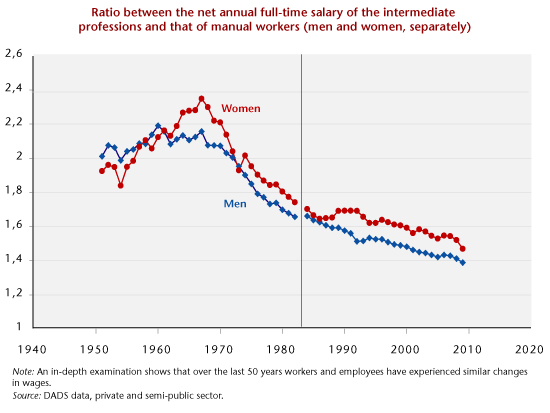Doesn’t real estate capital really contribute to inequality?
By Guillaume Allègre and Xavier Timbeau
In a response to Capital in the twenty-first century, Odran Bonnet, Pierre-Henri Bono, Guillaume Chapelle and Etienne Wasmer (2014) attempt to show that the book’s conclusions regarding an explosion in wealth inequality are “not plausible”. The authors point out an inconsistency in Thomas Piketty’s thesis: the model of capital accumulation is implicitly a model of the accumulation of productive capital, which is inconsistent with the decision to include real estate capital at its market value in measuring capital. If valued correctly, the ratio of capital to income would have remained stable in France, Britain, the United States and Canada, which contradicts the thesis of Piketty’s work.
In OFCE Briefing Note, no.9/2015 (“Does housing wealth contribute to wealth inequality? A tale of two New York”), we respond that the authors minimize the contribution of housing to inequality. In particular, we do not believe that trends in real estate prices have “second order effects (actual distributional effects) that are attenuated”. As is often the case, the disagreement is due in part to a lack of consensus about what kind of inequality actually matters: inequality in wealth? Income? Consumption? The potentially divergent dynamics of these inequalities? The disagreement is also due to the type of model used. The authors use a dynastic model in which property is passed from parents to children and grandchildren. In this model, changes in real estate prices do not have any real effect. This model is not relevant to accounting for inequalities generated by property in a society where people are mobile and have different life projects from their parents.
The housing bubble could fuel the development of inequality. Home ownership in the world’s metropoles is more and more becoming a closed club for the wealthy, which partitions young people between those with social, educational or financial capital, who can acquire property, and those who can only rent or move to less prosperous areas, with the consequence of further reducing their access to different types of capital. Would it not be better to build enough for everyone to find housing at a price that is in line with the amenities offered? Isn’t it apparent that this latter situation is more egalitarian than the former?
For more on this, see: Allègre, G. and X. Timbeau, 2014 : “Welcome to Nouillorc : Le capital-logement ne contribue-t-il vraiment pas aux inégalités?”, Note de l’OFCE, no. 42 of 25 June 2014.
